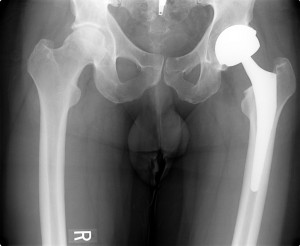
If you want to buy a new car, you can probably figure out a price range within a matter of minutes with a google search. The same is true for many other products. But in health care, forget it.
In a new study published today in JAMA Internal Medicine, researchers called more than 100 hospitals across the country. They included a range of both top-ranked centers and community hospitals and inquired about a common elective surgical procedure -- a hip replacement -- for a fictitious 62-year-old grandmother.
First off, only 10 percent of the non-top-ranked hospitals and 45 percent of the top-ranked hospitals were even able to provide a price. Researchers were a bit more successful when they called the hospital and physician separately.
And just what was the price range? $11,100 on the low end to $125,000 on the high end.
"Patients seeking elective (hip replacement) may find considerable price savings through comparison shopping," the authors write. No kidding -- except that half of the institutions couldn't even provide a price.